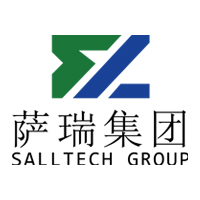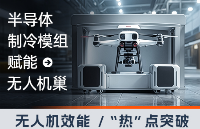Darren Quick ScanEagle 2 UAV prepares for takeoff
The ScanEagle 2 boasts a reciprocating internal combustion engine propulsion system specially developed for small UAVs
Image Gallery (2 images)
Since its first flight in June 2002 and introduction to the US Navy in 2005, the ScanEagle UAV developed by Boeing subsidiary Insitu has received a steady stream of improvements, including a short-wave infrared (SWIR) camera and Synthetic Aperture Radar (SAR), and clocked up over 800,000 combat flight hours over land and sea. Now Insitu has announced the next generation of the platform in the form of the ScanEagle 2.
Building on its experience with the ScanEagle, the ScanEagle 2 has the same 10.2 ft (3.1 m) wingspan as its predecessor, but is heavier, with an empty weight of 41.8 lb (19 kg) compared to the original‘s 30.9 to 39.68 lb (14 to 18 kg)。 However, the ScanEagle 2 boasts a slightly greater payload capacity of 7.7 lb (3.5 kg) to the ScanEagle’s 7.5 lb (3.4 kg)。
This is partly due to the introduction of a reciprocating internal combustion engine propulsion system that the company says is the first of its kind developed specifically for small unmanned aircraft system class vehicles and helps make the aircraft more affordable and reliable – important attributes as Insitu looks to expand its market beyond the military. The system is modular, with variants fueled by gasoline or heavy fuels (JP-5 or JP-8)。
“ScanEagle 2 will shepherd us into the next two decades as we focus on reliability and affordability and enter the civil/commercial market,” said Insitu president and CEO, Ryan M. Hartman. “And as ScanEagle has always done, ScanEagle 2 will provide the capability our warfighters have come to expect from Insitu – yet more affordable and more capable.”
The ScanEagle 2 shares many of the same capabilities as its predecessor, including operation ceiling – 19,500 ft (5,950 m) – maximum horizontal speed – 80 knots (92 mph, 148 km/h) – and cruise speed – 50 to 60 knots (58 to 69 mph, 93 to 111 km/h)。 However, endurance takes a hit with the ScanEagle able to stay aloft for over 24 hours, whereas the ScanEagle 2 will start coming back to Earth in around 16 hours.
One of the ScanEagle 2‘s biggest advantages is its ability to provide 100 to 150 W (depending on engine type) of power to on-board payloads, outdoing the 60 W the ScanEagle can deliver. This, coupled with an Ethernet-based architecture and reduction in Electronic Magnetic Interference (EMI), allows the integration of more sophisticated and electronically sensitive payloads.
Thanks to its open-architecture ground control system, the ScanEagle 2 boasts compatibility with many existing unmanned systems, while its launch-and-recovery system is the same used by Insitu UAV stablemate, the Integrator. The company has also improved the aircraft’s image capture capabilities with a fully digital video system.
Insitu revealed the ScanEagle 2 at the Euronaval Exhibition and Conference in Paris this week.
Source: Insitu
自動翻譯僅供參考
掃描鷹2無人機準備起飛 戴倫 2無人機準備
“掃描鷹”2擁有一個往復(fù)式內(nèi)燃發(fā)動機推進系統(tǒng)是專為小型無人機
圖像畫廊發(fā)展(2幅)
自從2002六月首飛,2005的美國海軍介紹,由波音公司研制的原位“掃描鷹”無人機已經(jīng)獲得源源不斷的改進,包括短波紅外(SWIR)相機和合成孔徑雷達(SAR),并打了超過800000戰(zhàn)斗飛行小時在陸地和海洋。現(xiàn)在現(xiàn)場宣布該平臺的下一代在“掃描鷹”2種形式。
建設(shè)經(jīng)驗與“掃描鷹”,“掃描鷹”2具有相同的10.2英尺(3.1米)的翼展為它的前身,但較重,有41.8磅重(19公斤空)相比原來的30.9到39.68磅(14至18公斤)。然而,“掃描鷹”2擁有一個稍大的有效載荷能力7.7磅(3.5公斤)的“掃描鷹”的7.5磅(3.4公斤)。
這部分是由于引進往復(fù)式內(nèi)燃發(fā)動機推進系統(tǒng),該公司表示,是一種專門為小型無人駕駛飛機系統(tǒng)類車輛并有助于使飛機更經(jīng)濟實惠和可靠的–重要屬性作為現(xiàn)場看起來擴大市場除了軍事。該系統(tǒng)是模塊化的,由汽油或重的燃料為燃料的變體(JP-5或JP-8)。
“掃描鷹2將引領(lǐng)我們進入下一個二十年,我們專注于可靠性和經(jīng)濟性,進入民用/商用市場,“原位總統(tǒng)首席執(zhí)行官說,瑞恩·哈特曼。”作為“掃描鷹”一直在做的事情,“掃描鷹”2將提供的能力,我們的戰(zhàn)士所期望從原位–但更實惠、更能干。”
“掃描鷹”2共享許多相同的功能,它的前身,包括操作吸–19500英尺(5950米)–最大水平速度–80節(jié)(每小時92英里,148公里/小時),巡航速度––50至60海里(58到69英里每小時,93到111公里/小時)。然而,耐力需要擊中“掃描鷹”能夠在空中停留超過24小時,而“掃描鷹”2將開始回到地球在16小時左右。
SCAN鷹2的最大優(yōu)點之一是它能夠提供100至150 W(取決于發(fā)動機類型)的電力載荷,超過了掃描鷹可以交付的60 W。這與基于以太網(wǎng)的體系結(jié)構(gòu)和電子磁干擾(EMI)的減少相結(jié)合,允許更復(fù)雜和電子敏感的有效載荷的集成。
由于其開放式架構(gòu),地面控制系統(tǒng),“掃描鷹”2擁有很多現(xiàn)有的無人系統(tǒng)的兼容性,而其發(fā)射和回收系統(tǒng)的同時采用原位無人機stablemate,積分器。該公司還提高了飛機的圖像捕捉能力與全數(shù)字視頻系統(tǒng)。
原位顯示“掃描鷹”2在euronaval展覽和會議本周在巴黎。
-
無人機
+關(guān)注
關(guān)注
231文章
10845瀏覽量
186825
發(fā)布評論請先 登錄
低空物流:無人機開啟未來配送新篇章
無人機消防巡檢系統(tǒng)守護城市安全
《手把手教你做星閃無人機—KaihongOS星閃無人機開發(fā)實戰(zhàn)》系列課程課件匯總
科達嘉電感在無人機系統(tǒng)中的應(yīng)用
國產(chǎn)大型無人機首次量產(chǎn)交付
舵機在無人機中的作用
MOS 管在無人機電池中的關(guān)鍵應(yīng)用

小軸距高性能!時代星光發(fā)布蜂鷹F1超高性價比單兵無人機

三維激光掃描儀與無人機結(jié)合的應(yīng)用
半導(dǎo)體制冷模組賦能無人機巢:無人機效能 “熱”?點突破

DIY了一臺無人機,用全志T113芯片
開源項目!DIY了一臺無人機,用全志T113芯片
無人機全波段偵測跟蹤 杜絕類似天津黑飛事件

光伏無人機巡檢系統(tǒng)的應(yīng)用






 掃描鷹2無人機準備起飛
掃描鷹2無人機準備起飛











評論